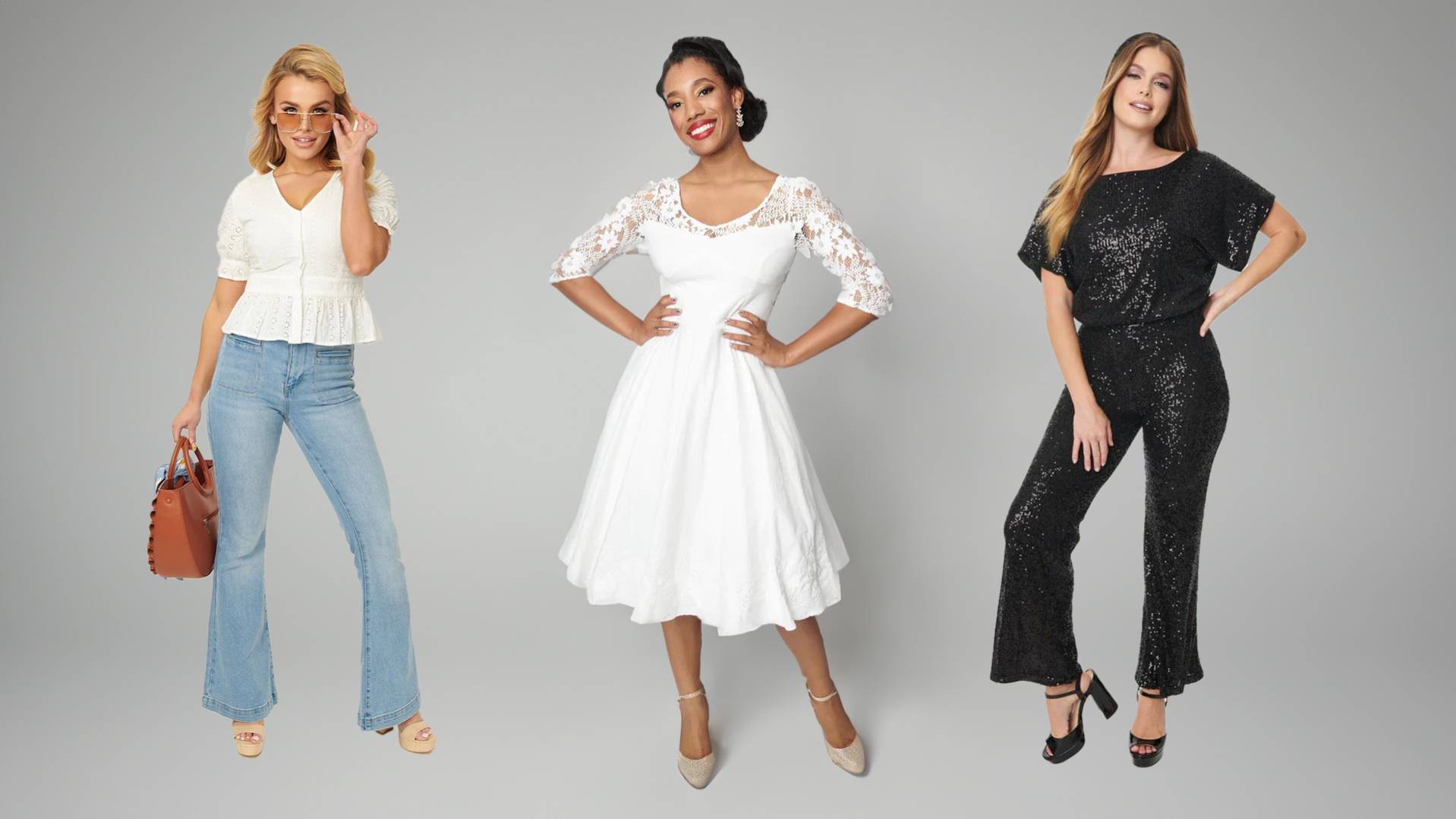How to Identify High-Quality Fabrics in Branded Clothing
How to Identify High-Quality Fabrics in Branded Clothing
Blog Article
The Significance of Lasting Apparel: Exactly How It Impacts the Setting and Your Wardrobe
Lasting garments is increasingly acknowledged for its crucial duty in decreasing the ecological impact of the fast fashion business. By concentrating on environmentally friendly products and honest production methods, it addresses pushing ecological problems. This change not only profits the earth however also influences customer options, leading to an extra thoughtful technique to closet administration. Understanding these dynamics raises necessary inquiries concerning style's future and personal responsibility in forming it.
The Environmental Footprint of Quick Style

Advantages of Sustainable Materials
Sustainable products provide considerable advantages, specifically via eco-friendly fabric choices that decrease ecological damage. These materials also demonstrate resilience and longevity, reducing the requirement for frequent replacements. Therefore, they add to an extra sustainable style sector and advertise accountable consumer actions.
Eco-Friendly Textile Options
While the fashion industry has actually long been linked with fast fads and environmental damage, the rise of environmentally friendly textile options presents a transformative chance. Lasting materials such as natural cotton, hemp, and Tencel have acquired appeal due to their reduced eco-friendly effect. These materials are often produced without unsafe pesticides and call for much less water, decreasing their carbon footprint - Branded Clothing. In addition, lots of environment-friendly textiles are eco-friendly, adding to a circular economy by minimizing waste. Choosing lasting materials not just sustains ecologically liable practices yet also promotes much healthier ecosystems. As customers end up being a lot more familiar with their buying power, the demand for environmentally friendly textiles encourages brands to innovate and embrace even more lasting manufacturing approaches, eventually profiting the earth and future generations
Resilience and Long Life Benefits
Many customers are significantly identifying the longevity and long life benefits of sustainable materials in their clothing choices. Unlike conventional materials, sustainable products such as natural cotton, hemp, and recycled polyester are crafted to endure wear and tear, leading to garments that last longer. This lowered frequency of substitute not only saves consumers money gradually however additionally diminishes waste produced by quick style. In addition, sustainable garments commonly utilizes green manufacturing methods that improve fabric toughness, contributing to a decrease in the overall carbon footprint. By buying long lasting garments, customers can cultivate a more sustainable closet while appreciating high-quality pieces that keep their visual and performance over time. Subsequently, toughness and longevity stand as key advantages of picking sustainable materials.
Minimizing Waste Via Sustainable Practices
Lowering waste in the fashion business can be attained via ingenious methods such as upcycling and repurposing materials. In addition, adopting minimalist closet approaches motivates consumers to focus on top quality over amount, eventually reducing clothes consumption. Together, these approaches contribute significantly to a much more sustainable apparel version.
Upcycling and Repurposing Products
Upcycling and repurposing materials have actually become innovative methods in the garment industry, transforming discarded fabrics into valuable brand-new products. This approach not just reduces waste but likewise urges creativity and uniqueness in apparel design. By taking old garments and materials, designers can produce special items that reflect individual design while reducing the need for new sources. Furthermore, upcycling typically needs less energy and water contrasted to standard production processes, significantly decreasing the environmental impact of style. As customers become extra mindful of sustainability, the appeal of upcycled garments remains to increase, advertising a circular economy. Eventually, these practices add to an extra lasting future, where fashion prioritizes ecological health over fast production and consumption.

Minimalist Wardrobe Techniques
As people increasingly look for to lessen their environmental influence, taking on minimalist wardrobe strategies has gotten grip as an effective method to sustainable style. These strategies emphasize quality over amount, encouraging consumers to curate a smaller collection of flexible, resilient apparel. By concentrating on timeless items that can be mixed and matched, individuals can lower the regularity of acquisitions and ultimately reduce waste.Additionally, minimalism advertises conscious consumption, urging buyers to assess the ethical and ecological ramifications of their selections. This strategy not just promotes a more lasting way of life yet also simplifies everyday decision-making pertaining to attire. As individuals embrace minimal principles, they contribute to a fashion society that values sustainability and responsible consumerism, inevitably causing a much more eco-conscious society.
The Duty of Ethical Labor in Lasting Style
While numerous consumers are increasingly familiar with the ecological effects of their clothes options, the value of ethical labor techniques in lasting style can not be overlooked. Moral labor encompasses fair wages, safe working conditions, and regard for workers' civil liberties, forming the foundation of responsible fashion manufacturing. Brands that focus on moral labor not just boost neighborhoods yet additionally set a requirement for liability in the industry.Moreover, the combination of moral practices cultivates openness, enabling consumers to make informed choices regarding their purchases. This method contrasts sharply with fast style's exploitative labor designs, which often prioritize profit over individuals. By supporting companies devoted to honest labor, consumers add to a system that values find out here human self-respect along with ecological sustainability. As a result, ethical labor is not merely an add-on; it is vital to the more comprehensive objective of lasting fashion, making certain that the pursuit for eco-friendliness does not come at the cost of civils rights.
The Effect of Sustainable Clothes on Carbon Emissions
Sustainable clothes has the possible to considerably reduce carbon discharges connected with the apparel industry. Standard garment production contributes especially to greenhouse gas discharges, primarily due to energy-intensive production processes and the usage of non-renewable resources. In contrast, sustainable style focuses on green materials, such as organic cotton or recycled fibers, which often require much less power to produce.Moreover, lasting brand names tend to take on extra reliable production techniques, reducing waste and reducing general emissions. By focusing on durability and timeless layout, lasting clothing urges consumers to buy much less regularly, more lowering the carbon footprint connected with overconsumption.Additionally, lots of sustainable brand names are dedicated to transparency in their supply chains, making it possible for customers to make enlightened options that align with their values. Eventually, changing in the direction of lasting clothing can result in a significant decrease in carbon emissions, adding to a healthier world and a much more lasting future for the fashion business.
Supporting Local Economies With Lasting Options
The shift toward lasting clothes not only addresses ecological concerns however additionally substantially benefits neighborhood economic situations. By choosing lasting style, customers typically sustain small companies and local artisans, enhancing neighborhood resilience. These enterprises usually operate on a smaller scale, prioritizing workmanship and ethical practices over mass production.Investing in locally made sustainable garments cultivates job production and promotes financial growth within communities. As customers end up being much more knowledgeable about the ecological effect of their purchases, they increasingly choose items that mirror their worths. This need encourages neighborhood producers to embrace sustainable methods, adding to a round economy.Moreover, supporting local organizations lowers transport emissions, straightening with eco-conscious customer habits. The interconnectedness of lasting clothing and regional economic situations emphasizes the important function that private choices play in promoting both economic and environmental health. By cultivating these local links, areas can grow while likewise functioning towards a more lasting future.
Changing Your Storage Room: Tips for a Sustainable Closet
As individuals look for to reduce their ecological effect, changing a storage room right into a sustainable closet comes to be an important action. One reliable strategy is to examine existing apparel, maintaining only products that are worn regularly which line up with sustainability objectives. Focusing on top quality over amount is essential; buying sturdy items from environmentally friendly brand names can significantly lower waste.Additionally, including pre-owned items can revive a closet while decreasing environmental damages. Organizing clothing swaps with buddies or giving away extra things can better promote sustainability.When purchasing, people need to look for products that are natural, recycled, or biodegradable, and prevent fast fashion stores - Branded Clothing. Exercising conscious consumption by thoughtfully thinking about each acquisition can add to a much more lasting lifestyle. By applying these suggestions, one can create a closet link that mirrors personal style while sustaining ecological stewardship
Often Asked Inquiries
How Can I Determine Sustainable Clothes Brands?
To determine lasting clothing brand names, one need to research materials made use of, look for certifications like Fair Profession, and check out the brand's openness about their production procedures, labor methods, and ecological impact, ensuring moral and eco-friendly techniques are focused on.
What Are the Expenses Connected With Lasting Style?
The expenses associated with sustainable fashion can vary substantially. Higher manufacturing expenses, honest sourcing, and eco-friendly products often lead to boosted market prices, which may prevent some consumers while attracting environmentally aware buyers.
Can Sustainable Apparel Be Stylish and Stylish?
Sustainable clothes can without a doubt be trendy and stylish. Designers significantly prioritize innovative products and moral production approaches, verifying important site that fashion and sustainability can exist side-by-side. Consumers now have diverse options that mix aesthetic appeals with ecological consciousness.
Just How Does Washing Clothes Affect Their Sustainability?
Cleaning garments substantially influences sustainability by consuming water and energy, contributing to pollution, and triggering microplastic launch. Frequent cleaning can deteriorate fabrics, shortening their life-span and boosting the demand for replacements, inevitably aggravating ecological worries.
What Is the Life-span of Lasting Garments Compared to Rapid Style?
The lifespan of lasting apparel generally goes beyond that of fast style items, frequently long-term several years due to top quality materials and workmanship. On the other hand, rapid style garments may deteriorate rapidly, necessitating even more regular substitutes. Lasting clothing is progressively recognized for its important function in lessening the environmental impact of the fast style market. While many customers are increasingly mindful of the environmental effects of their garments selections, the importance of ethical labor practices in lasting fashion can not be neglected. Branded Clothing. Lasting garments has the potential to significantly minimize carbon emissions associated with the fashion industry. In contrast, lasting style concentrates on eco-friendly products, such as organic cotton or recycled fibers, which commonly require less energy to produce.Moreover, sustainable brand names tend to adopt a lot more reliable manufacturing techniques, decreasing waste and reducing total discharges. By focusing on resilience and timeless style, lasting clothes motivates customers to buy less frequently, further minimizing the carbon impact associated with overconsumption.Additionally, several sustainable brands are dedicated to openness in their supply chains, enabling consumers to make educated options that straighten with their worths
Report this page